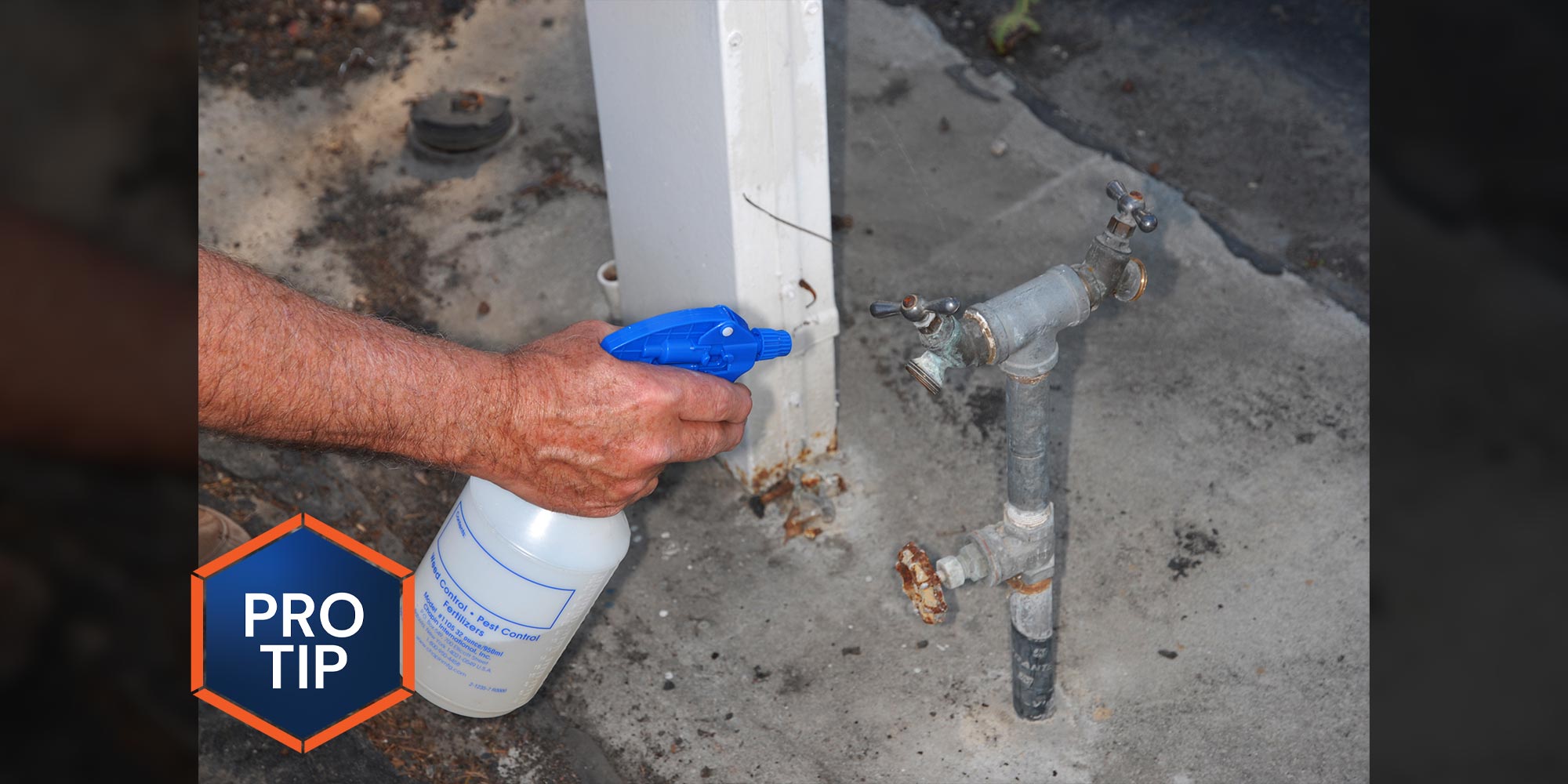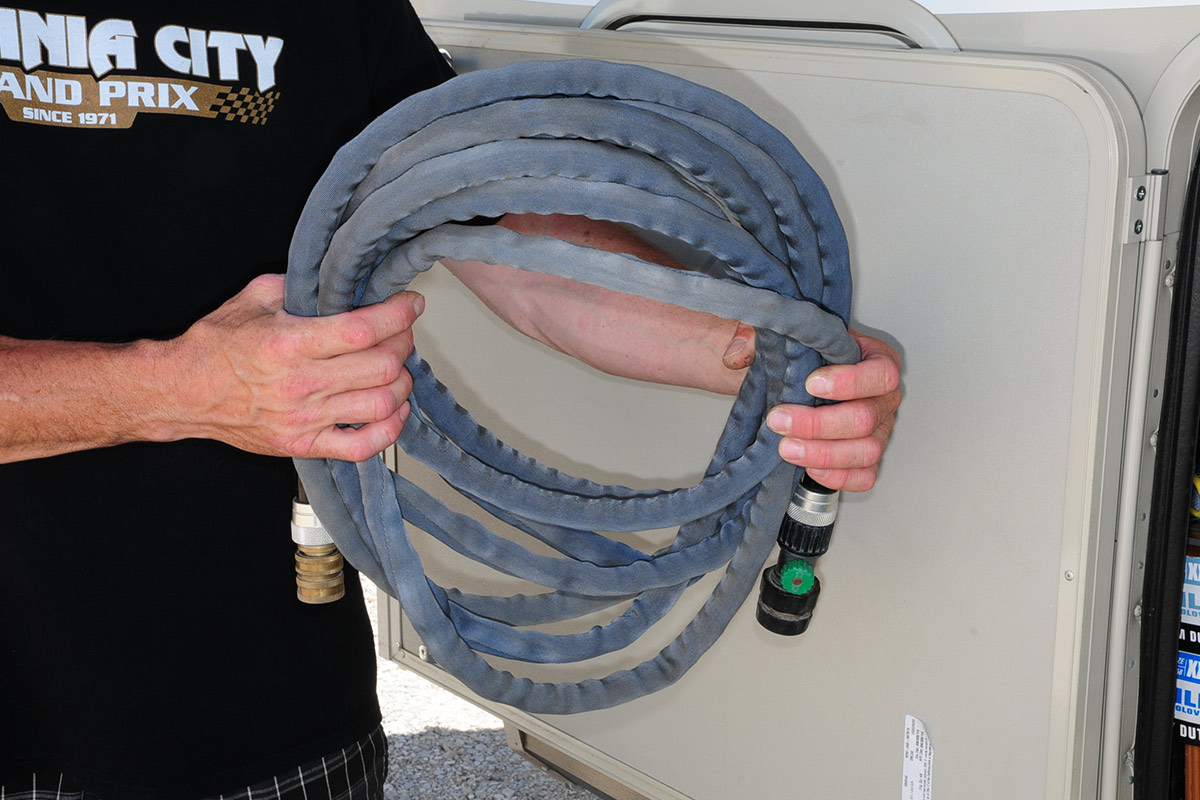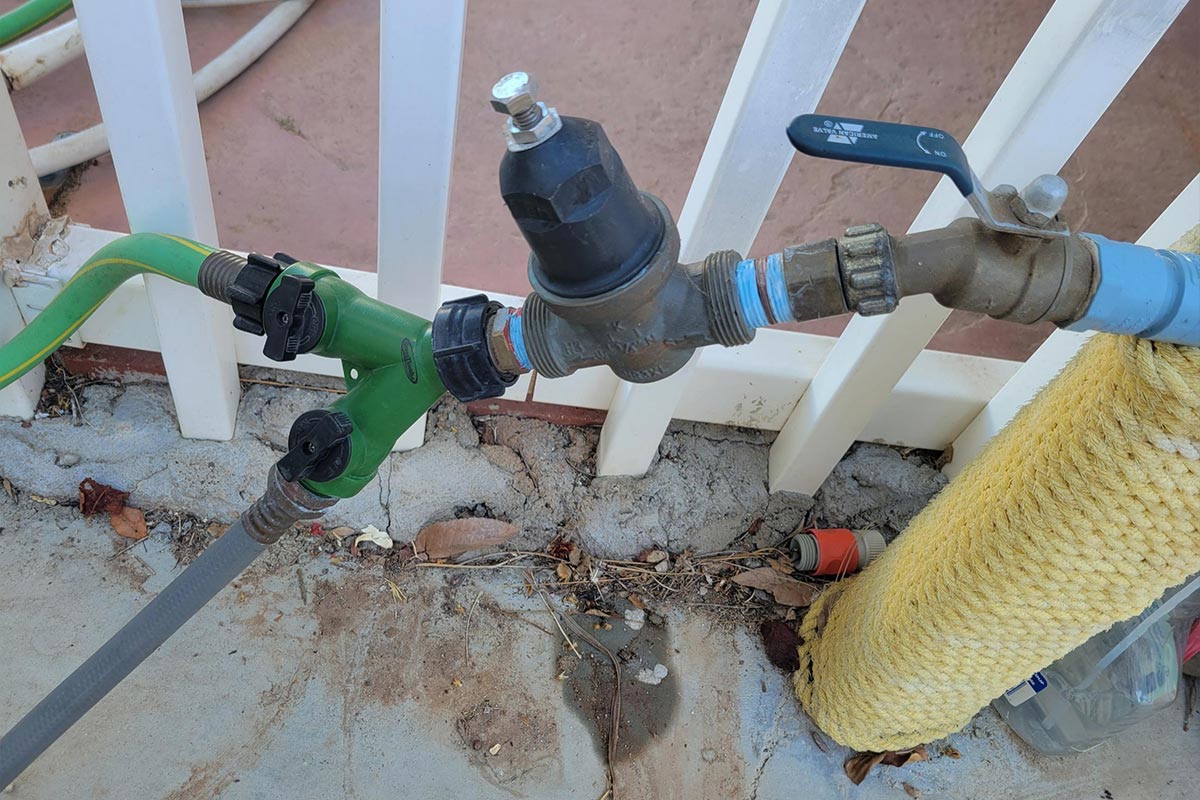Water Works

While RVers would do well to install an onboard water filtration system to ensure the quality of the water coming out of the taps, that’s really only the “last lap” of proper water safety: you still need to do what you can to route your water supply into the RV in the safest manner possible.
Unfortunately, many RVers limit their water-system upgrades to a hose designed and dedicated for water service to the RV, either via the city hookup or when filling the onboard tank. These hoses, marketed for RV use, are free of polyvinyl chloride, BPA (chemical used for making items out of plastic), lead and other toxic materials. Yes, we all drank out of green garden hoses when we were kids — but now that we know better, these hoses should be reserved for draining gray water and/or cleaning out holding tanks. Fortunately, there are numerous hoses — even those not marketed exclusively for RV use — that are clearly marked as safe for drinking.
- In most cases, the water and sewer hookup in RV parks are in close proximity of each other. There are logical reasons for this, including convenience when building out the sites, but there’s a downside to this arrangement: It’s easy to contaminate the water spigot with wayward waste — especially when the water is used to final flush the dump hose. Before initially connecting a water hose, be sure to spray the spigot with a solution containing at least 70% rubbing alcohol or a mixture of bleach and water.
- For years, many of us have used the white RV/marine hoses, mostly in 25-foot lengths, to route water service into our RVs. They work, although most brands tend to get kinked and can be hard to work with when cold. Hoses under the Zero G (Teknor) or Camco Heavy Duty Premium Flexible Water Hose banners (both available online or at RV stores) are the ones I use for hooking up and adding water. A good combination is to use the 25-foot Zero G from the spigot to the filters and then a 10-foot length of Camco Flexible hose from the filter outlet to the city water hookup in/on the RV.

- Water pressure in RV parks can be high enough to burst the pipes and fittings in any RV system, which are designed to handle around 50 psi. Using a pressure regulator will circumvent this problem, but too many of these devices — especially the cheap models and those that come with the “starter kits” when buying a new RV — can create another problem: low water pressure. That’s because these common pressure regulators cut pressure by reducing flow. A better solution is to use a small residential adjustable pressure regulator and add hose fittings via the use of a few adapters. Just about all home-pressure regulators are pre-adjusted to 50 psi but can be tweaked as desired.

- If you are going to be away from your RV for an extended period of time (i.e., all day) turn the water off at the spigot. You never know when a hose or pipe can burst — whether from intense heat or defective material and flood the campsite — or worse, the inside of your RV.
Already a Subscriber? Click here for Access to the Full Issues.

